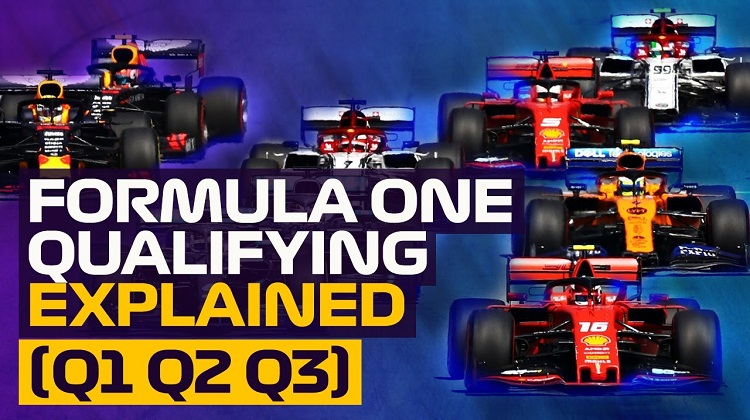Formula 1 is a high-speed, high-stakes sport that requires drivers to be at the top of their game. One of the most critical aspects of Formula 1 is qualifying, which determines the starting grid for the race. Qualifying sessions are divided into three parts: Q1, Q2, and Q3. Each session is designed to eliminate the slowest drivers and determine the fastest drivers who will compete for pole position.
Understanding the different types of qualifying sessions in Formula 1 is crucial for fans who want to follow the sport closely. During Q1, all drivers participate, and the five slowest drivers are eliminated. In Q2, the remaining drivers compete, and the five slowest drivers are eliminated. Finally, in Q3, the top ten drivers compete for pole position. The driver who sets the fastest lap time during Q3 starts the race from the front of the grid.
Types of Qualifying Sessions
Formula 1 Qualifying sessions are an important part of the race weekend, as they determine the starting grid for the race. There are three types of Qualifying sessions, each with its own unique rules and format.
Q1
Q1 is the first Qualifying session of the weekend, where all drivers participate. The session lasts for 18 minutes, and the aim is to set the fastest lap time possible. The five slowest drivers are eliminated at the end of Q1, and they will start the race in the positions 16th to 20th.
Drivers are allowed to complete as many laps as they want during Q1, and they can use any tyre compound they wish. However, they must return to the pits if they set a lap time that is within 107% of the fastest time set in the session. If a driver fails to do so, they will not be allowed to start the race.
Q2
Q2 is the second Qualifying session, where the remaining drivers compete. The session lasts for 15 minutes, and the aim is to set the fastest lap time possible. The five slowest drivers are eliminated at the end of Q2, and they will start the race in the positions 11th to 15th.
Drivers are allowed to complete as many laps as they want during Q2, and they can use any tyre compound they wish. However, they must return to the pits if they set a lap time that is within 107% of the fastest time set in the session. If a driver fails to do so, they will not be allowed to start the race.
Q3
Q3 is the final Qualifying session, where the top ten drivers compete for Pole Position. The session lasts for 12 minutes, and the aim is to set the fastest lap time possible. The driver who sets the fastest time in Q3 will start the race from Pole Position.
Drivers are allowed to complete as many laps as they want during Q3, but they must use the same set of tyres for the entire session. The tyre compound they use is determined by the rules set out by Pirelli, the official tyre supplier of Formula 1.
Qualifying Rules
Qualifying is an important part of Formula 1 racing as it determines the starting grid for the race. The qualifying session is broken down into three parts: Q1, Q2, and Q3. Each session has its own set of rules that drivers must follow.
In Q1, all drivers participate, and they have 18 minutes to set their fastest lap time. The five slowest drivers are eliminated, and they fill positions 16 to 20 on the starting grid based on their lap time.
In Q2, the remaining 15 drivers compete, and they have 15 minutes to set their fastest lap time. The five slowest drivers are again eliminated, and they fill positions 11 to 15 on the starting grid based on their lap time.
Finally, in Q3, the top 10 drivers compete for pole position. They have 12 minutes to set their fastest lap time, and the driver with the fastest time earns pole position. The rest of the drivers fill positions 2 to 10 on the starting grid based on their lap time.
During the qualifying session, drivers are only allowed to use a limited number of tires. They must return the tires to the FIA (Fédération Internationale de l’Automobile) after the session for inspection. If a driver uses more tires than allowed, they may be penalized.
Additionally, during qualifying, drivers are not allowed to impede other drivers. If a driver is found to have impeded another driver, they may receive a penalty or have their lap time invalidated.
Overall, the qualifying rules in Formula 1 are designed to ensure fair competition and a competitive starting grid for each race.
Conclusion
Qualifying sessions in Formula 1 are crucial to determining the grid for the race and starting positions. Understanding the different types of qualifying sessions is essential for fans, drivers, and teams.
During the Q1 session, all drivers participate, and the slowest five drivers are eliminated. In Q2, the remaining drivers compete, and the slowest five are again eliminated. In Q3, the top ten drivers compete for Pole Position.
It is important to note that the qualifying system has undergone many changes over the years, and it is likely to continue evolving in the future. For example, in 2021, a new format called Sprint Qualifying was introduced, which involves a shorter race on Saturday to determine the starting positions for Sunday’s race.
Overall, qualifying sessions are an exciting and essential part of Formula 1 racing, and fans and teams alike eagerly anticipate the results.

